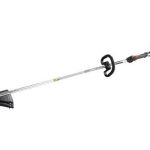
Deadheading also known as pruning.
(Courtesy: Sharon Dowdy of the University of Georgia Agriculture Dept. at flickr.com)
I think it was the Queen of Hearts character from the story Alice In Wonderland who uttered those immortal words, “Off with their heads.”
Now, why would anybody start off an article on gardening with this quote? It is because the phrase has something to do with preserving plants for the next season and simply describes a gardening technique known as Deadheading.
The process of deadheading is removing the flowering portion of a plant after it has faded. The procedure commonly takes place in the fall and can help plants to bloom well during the growing season.
The activity is urged to assist annuals, roses, and most perennials to bloom again later. It also alerts seeding plants to stop seeding and concentrate their energy on blooming.
The process can also be done on spring-blooming shrubs. However, it won’t encourage more blooms, but it will make the plants look nicer.
Tools you will need to deadhead include:
· Snip – Gardening experts suggest that you use hand pruners to cut tough, woody stems of shrubs and roses as well as plants including annual geraniums, salvia, and many perennials.
· Your Hands – That’s right! Just use your hands to snap wilting blossoms off of daylilies, iris, and rhododendrons.
· Shears – Garden shears are perfect for trimming shrubby-like plants like creeping phlox, lavender, coreopsis, and potentila and shear back asters and mums early in a season to encourage compact growth and more blooms.
· Pinch – The simple act of snapping off wilted blooms of plants with your thumb and forefinger will suffice when deadheading petunias and marigolds.
To deadhead properly, simply remove only the faded flower from the plant. Once the dying blooms have been removed, cut the stem back to a bud or leaf or to the plant’s base if it is without leaves.
When you deadhead plants you can also disbud –- remove the smaller flower buds. This action encourages a plant to concentrate its energy on the remaining flowers. The result of disbudding is that there won’t be as many blooms, but those that remain will be larger.
Don’t deadhead if you want a plant to produce fruit or seeds. In some cases, it may be more attractive to retain a fading bloom because it offers additional interest for the winter. Some plants that have seed head you may want to preserve include Echinaceas and some hips of roses. Another reason to keep the seed head is that it provides food for birds and other small creatures.
The procedure of cutting back is a part of deadheading. It refers to removing a part of a plant’s top growth. The type of plant, time of the year, and intended results should be considered when deciding to perform this technique of deadheading.
Gardeners cut back during the spring to remove the dead growth from the previous season. Typically, perennials are cut back to a few inches above the ground. Shrubs may be cut back by about one-third if they have summer blossoms. Spring blooming shrubs will have remaining blooms from the previous season on the growth. Garden experts advise that you do not cut back in this case until the bloom is finished.
Garden experts advise that you cut back perennials and annuals in the fall in preparation for winter. Other perennials can wait to be cut back until next spring. The rule of thumb is if a plant that has interest or strong stems that will not collapse due to the weight of snow, then keep them intact until next spring. If the plant has a weak stem, then it may help to cut it back in the fall.
The plants that you should not deadhead include clematis, sedum, most ornamental grasses and coneflowers. These plants have attractive seed heads that can be retained for winter for their interest and to attract birds and other creatures that like to feed on the seeds. You should cut these plants back in early spring before growth resumes.
Save
Save
Save
Save
Save
Save
Save






